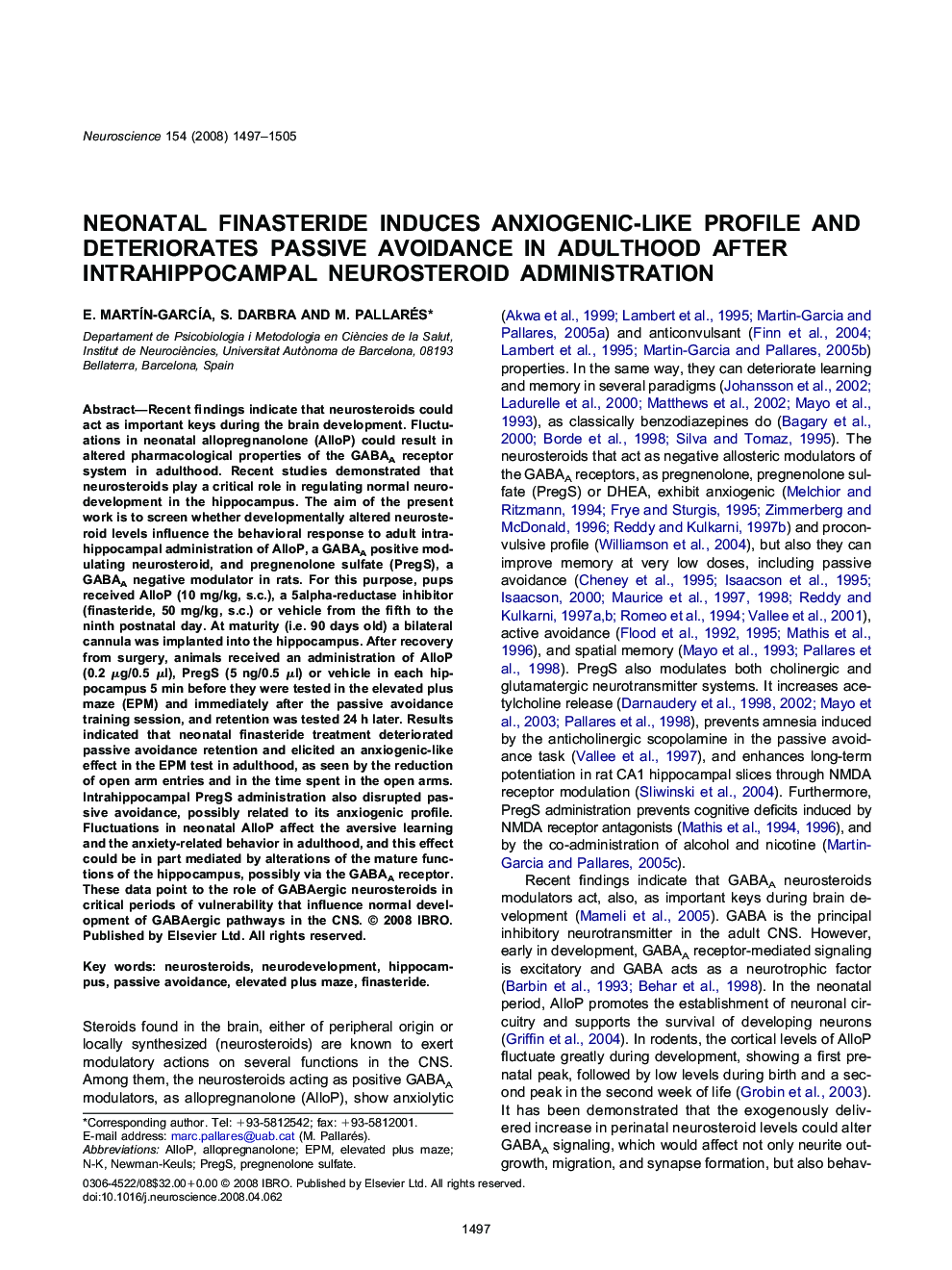| Article ID | Journal | Published Year | Pages | File Type |
|---|---|---|---|---|
| 4340415 | Neuroscience | 2008 | 9 Pages |
Recent findings indicate that neurosteroids could act as important keys during the brain development. Fluctuations in neonatal allopregnanolone (AlloP) could result in altered pharmacological properties of the GABAA receptor system in adulthood. Recent studies demonstrated that neurosteroids play a critical role in regulating normal neurodevelopment in the hippocampus. The aim of the present work is to screen whether developmentally altered neurosteroid levels influence the behavioral response to adult intrahippocampal administration of AlloP, a GABAA positive modulating neurosteroid, and pregnenolone sulfate (PregS), a GABAA negative modulator in rats. For this purpose, pups received AlloP (10 mg/kg, s.c.), a 5alpha-reductase inhibitor (finasteride, 50 mg/kg, s.c.) or vehicle from the fifth to the ninth postnatal day. At maturity (i.e. 90 days old) a bilateral cannula was implanted into the hippocampus. After recovery from surgery, animals received an administration of AlloP (0.2 μg/0.5 μl), PregS (5 ng/0.5 μl) or vehicle in each hippocampus 5 min before they were tested in the elevated plus maze (EPM) and immediately after the passive avoidance training session, and retention was tested 24 h later. Results indicated that neonatal finasteride treatment deteriorated passive avoidance retention and elicited an anxiogenic-like effect in the EPM test in adulthood, as seen by the reduction of open arm entries and in the time spent in the open arms. Intrahippocampal PregS administration also disrupted passive avoidance, possibly related to its anxiogenic profile. Fluctuations in neonatal AlloP affect the aversive learning and the anxiety-related behavior in adulthood, and this effect could be in part mediated by alterations of the mature functions of the hippocampus, possibly via the GABAA receptor. These data point to the role of GABAergic neurosteroids in critical periods of vulnerability that influence normal development of GABAergic pathways in the CNS.
